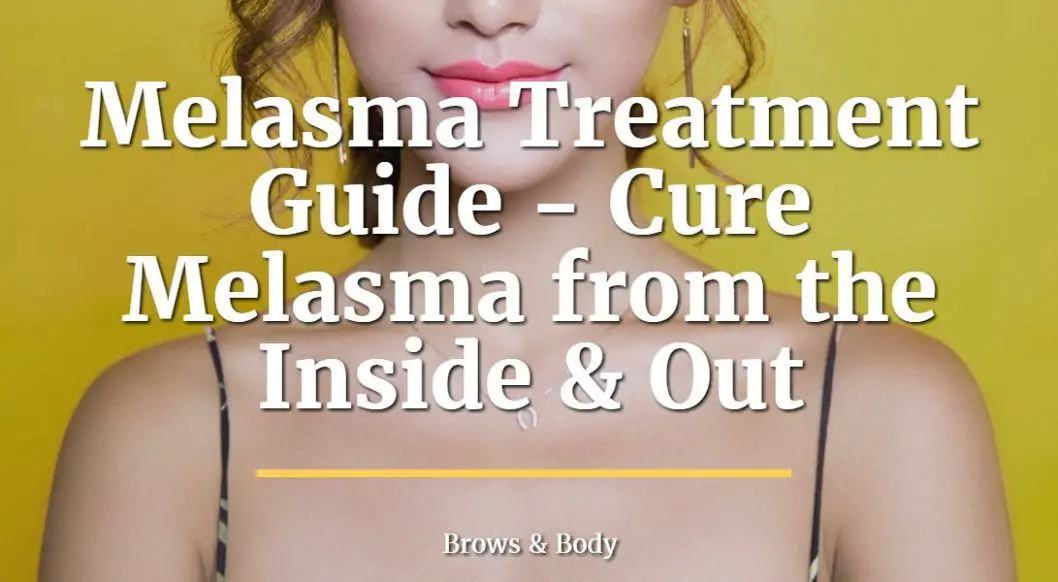What is an Astringent & Should you use it on your Skin?
Learn everything you need to know about astringents including the difference between astringents and toners, who should consider using astringents, the best products to use and the safety profile of this powerful ingredient.
More…
What in the World is an Astringent?
If you’ve been interested in cosmetics then there’s little chance you have not heard about this special ingredient.
But what is an astringent?
Do you actually need it for your skin?
What benefits does it provide?
To put it simply an Astringent is actually a classification that defines properties that certain ingredients and chemicals have.
Any ingredient that is shown to shrink or constrict body tissues is classified as an “astringent”.
This effect is particularly useful for certain skin conditions such as advanced aging and even acne.
But how do these astringents compare to other cosmetic products such as toners?
It turns out that astringents, while very powerful, probably have a more limited use profile when compared to the more versatile toner.
Both have similar effects on your skin and body but they differ in their strength and sometimes ingredients.
With these concepts in mind let’s jump in to help you determine which you should be using…
How Astringents Work + Other Benefits
We said above that astringents work by helping to shrink and constrict body tissues.
This effect extends to your skin as well!
This is one of the main reasons that astringents (and toners) are included in most skin care and beauty regimens.
Don’t you want your skin to be tighter and smoother?
The answer is of course, but astringents also work in other ways.
Another benefit to using astringents is that they can help to naturally balance the pH levels of your skin.
You have to remember that the pH of your skin is naturally slightly acidic which means that it has a pH lower than 7.0 (considered neutral).
But here’s the issue:
What happens when you put cosmetic products on your skin that are not the same pH as your skin?
What happens when you use skin care products that alter the acid mantle of your skin which is there to protect your skin?
Doing either of these things will result in changing the pH and making it more basic.
This is a problem especially when you consider that certain ingredients HAVE to be at a certain pH to work!
This is true of Vitamin C serum and it’s true of other ingredients as well.
And this is where Astringents step in.
They act to naturally restore pH balance to your skin.
But that’s not all they do.
In addition they also help to naturally fight off bacteria and even fungus.
Remember that your skin is the biggest organ on your body and on it lives a huge ecosystem of bacteria.
Some bacteria are good, and others are bad.
But it’s in your best interest to keep these bacterial species in harmony with one another.
An overgrowth of bad bacteria may lead to skin conditions such as rosacea and acne.
So using an astringent may naturally help maintain this harmony and keep your skin looking fresh and amazing.
And lastly, astringents may help to cool down inflammation, reduce the healing time of sores and reduce natural oils in the skin.
Much of these benefits occur through the astringent itself but also through tannins which exist in many naturally occurring astringents.
Tannins are naturally occurring products found most commonly in foods that provide many of the benefits listed here.
Astringent vs Toner
Is an astringent the same thing as a toner and will using a toner provide the same benefits as an astringent?
These are good questions and the answer is not super clear.
We often use the word toner and astringent synonymously or interchangeably but these two things are not the same.
While astringents typically do act as a toner for the skin, not all toners have astringents.
Confusing? Sort of.
Astringents are basically much more powerful formulations of toners which contain similar ingredients but at a fraction of the potency.
Consider the example of witch hazel.
Witch hazel is both an astringent and a toner, but the main difference has to do with how it is formulated and the concentration of tannins during this process.
Typical witch hazel toners often contain very little to no tannins due to the distillation process that occurs during formulation.
Compare this to non distilled witch hazel which contain up to 195% more tannins.
Because we know that tannins provide many of the benefits to astringents it’s easy to see why astringents are basically much more powerful versions of toners.
Does that mean one is better than the other?
Not necessarily, but you should definitely consider your situation before you jump out and purchase either.
Astringents tend to work better for those people who have tougher to treat skin conditions such as acne, persistent rashes, dermatitis and so on.
Whereas toners may be better for everyday topical application to help KEEP the skin looking good.
If you are having trouble understanding the difference think of it this way:
Astringents are very powerful and they should be used sparingly (overuse can dry out the skin).
Toners are not quite as powerful (but still great for the skin) and can be used topically every day (sometimes multiple times per day).
The type that you use depends on your skin, your sensitivity and what skin problems (if any) you are currently dealing with.
Using Astringents for Acne
Astringents can also be a powerful tool in the treatment of acne.
But they can also be a double edged sword.
What do I mean?
The positive benefits of using astringents in acne include increased wound healing, bacteria fighting properties and pH balancing effects.
The bad?
Astringents can also promote dry skin and trigger an increase in oil production and actually promote breakouts.
When it comes to acne the best approach is to tailor your treatment to your skin, and the same approach should be used when considering astringents.
You’ll find that almost every 3 step acne system contains a toner which usually contains witch hazel.
But remember:
Toners are different from Astringents.
So the best approach to using astringents for acne may be to use astringents only IF you have VERY oily skin.
And even then make sure that you don’t overdo it with daily application.
In addition, if you notice a worsening in your breakouts it may be best to switch to a toner.
If you have “run of the mill” acne then using a daily toner as part of a 3 step system is probably your best bet.
Examples of Astringent Products
Now that you have an idea of how astringents work we can talk about specific products.
The two most common astringents included in cosmetic beauty products include witch hazel and glycerin.
Some of the more “powerful” astringents often include alcohol, cider vinegar and high concentrations of witch hazel with tannins.
These can be very irritating and rough on the skin, so instead of shooting for these it may be a better option to go with the more gentle (but still powerful) toners.
These toners have similar properties as astringents but are much more gentle on the skin!
They have also been formulated in such a way to include other nourishing ingredients to help calm irritation and reduce pore size.
#1. Witch Hazel
Witch hazel is probably the single most common astringent in beauty and cosmetic products.
Witch hazel is also included in the treatment of other skin diseases such as hemorrhoids and is very common in medical products.
You can see an example of a high quality witch hazel based toner below:
#2. Glycerin
Glycerin can often be added to other ingredients to help reduce irritation associated with astringents but still take the place of the “alcohol” component.
Glycerin based products are often combined with other natural plants and substances such as lavender which act to nourish the skin.
If you’ve used witch hazel before and didn’t get the results you were looking for then you may want to try glycerin based products such as this one:
Who should use Astringents?
In most cases you will probably want to stick with a toner over an astringent simply due to how well toners are tolerated.
If you fall into any of the following categories, however, you can still consider using a powerful astringent:
- Those suffering from difficult to treat acne
- Those with very oily skin (not prone to drying out)
- Those who have tried toners and didn’t get their desired results
If you don’t fall into any of these categories then you may want to stick to a high quality based toner which are well tolerated among all skin types.
Side Effects from Using Astringents Too Often
The most common side effects of using an astringent too often is usually just dry skin.
But long term use of powerful astringents can also alter pH levels on the skin, increase your risk of developing breakouts and acne, and potentially alter bacterial concentrations on the skin’s surface.
You can prevent these negative side effects by reducing how often you use your astringent or simply switch to a toner (which is less powerful).
Final Thoughts
Before you look into using an astringent make sure you understand that these products are very powerful and typically best used for those who suffer from VERY oily skin or acneic complexions.
For most other individuals it may be best to stick to the less intense but still powerful version of astringents known as toners.
The best and most widely used astringent and toning compounds include witch hazel and glycerin.
Toners can be used daily and often provide superior results for many different skin types.
Now I want to hear from you:
Are you using an astringent?
Has it worked for you?
Or do you prefer toners instead?
Leave your comments below!






































